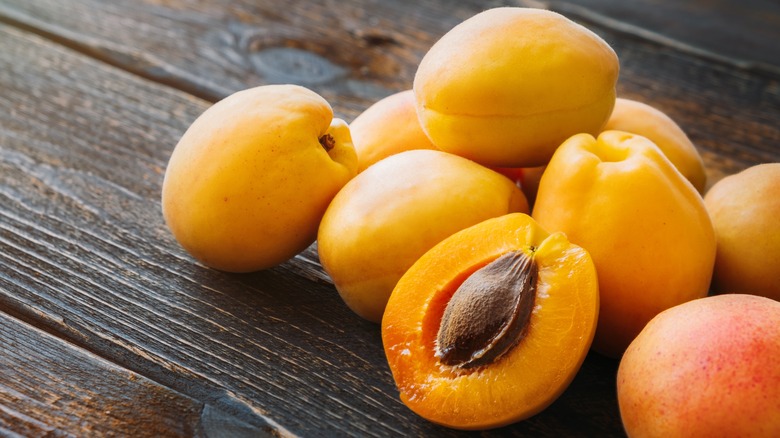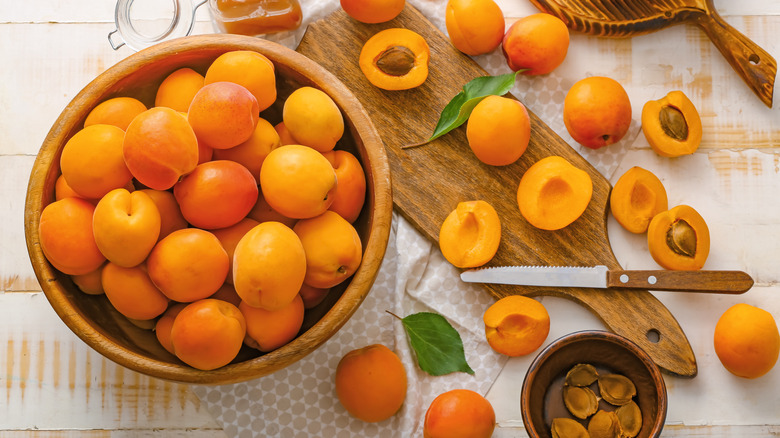The Simple Way To Keep Fresh-Cut Apricots Colorful In Your Dishes
The minute you slice open an apricot, you start an invisible timer. As soon as the bright, orange interior makes contact with oxygen, it begins a process that, left uninhibited, will turn the apricot brown and make it appear unappetizing. If you're eating the fruit right away, that is not a problem. But, when you want to prepare a dish that depends on the apricots keeping their inviting color, like a summertime flatbread, this oxidation process can present a bit of an issue.
In this situation, acid is your friend. A simple dip in a bath of lemon juice, orange juice, or pineapple juice will help slow the browning process of your apricots. You can either introduce this trick into your routine, or you can look for recipes that will automatically combine fresh apricots with an acid element, such as a chamomile stone fruit salad.
Why acid slows enzymatic browning
Apricots are not the only fruits that turn brown after cutting. There are many fruits, like apples, that begin to show signs of oxidation right away. The scientific reason behind this is that there are enzymes in fruit that help it to ripen called polyphenol oxidase (PPO). When the fruit is cut or opened, the enzymes are exposed to air, which triggers a series of reactions between compounds in a process called enzymatic browning.
The introduction of an acid element presents an obstacle for PPO — it slows down the enzyme substantially. Depending on what you are making, you can choose an acidic element to make contact with your cut apricots based on taste preference. Take the acidic juice and put it into a shallow dish, dipping each slice and letting the excess drip off, or lightly coat the outside of the slices using a pastry brush.

